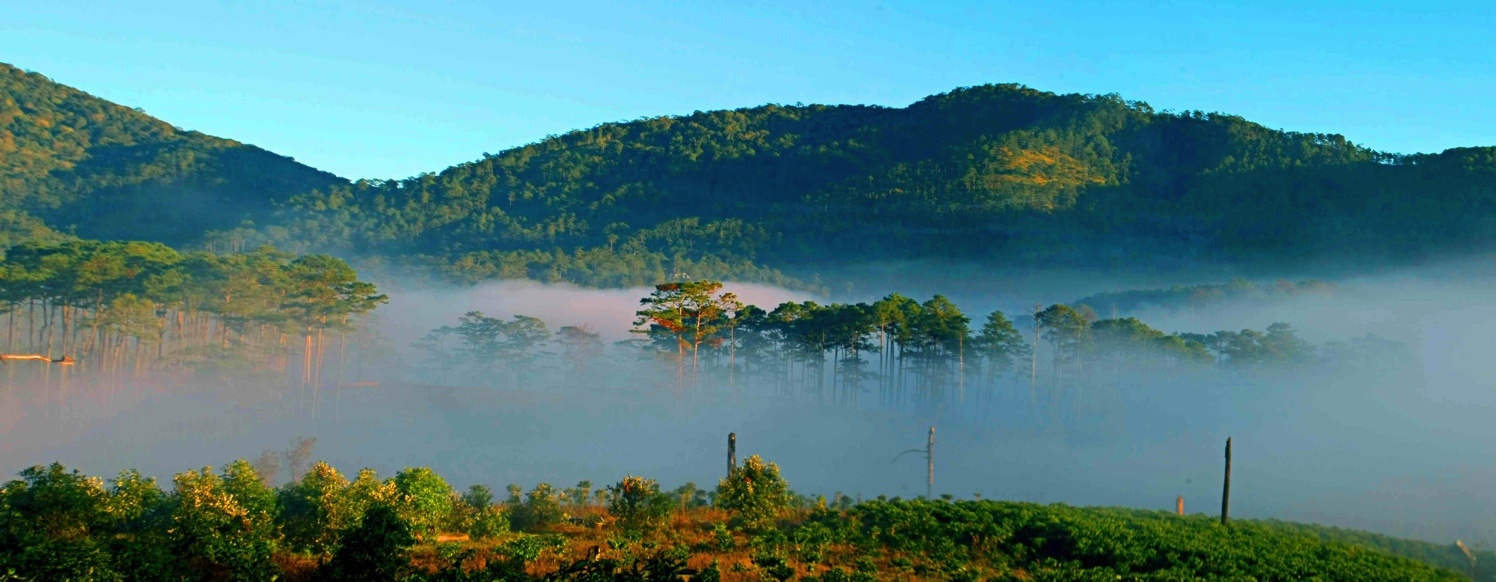
About us
Southeast Asian Paleo Environments Consortium (SAPEC) is a group of scientists dedicated to reconstructing and understanding variability of the paleo environment of Southeast Asia within the context of the greater global climate system. The SAPEC concept was developed by Dr. Brendan Buckley (from Columbia University) and co-PIs in 2009 at a workshop in Da Lat, Vietnam, supported by PAGES and NSF. The realization of his plan to bring multiple regional proxies together for a methods workshop began in earnest in January 2019 with the Isotopes in the Environment Workshop, January 2019 at the International Center for Tropical Highlands Ecosystems Research (ICTHER). This two-day meeting was attended by a small group of tree ring, speleothem, and lake sediment scientists, as well as historians working in the region. The first official gathering of SAPEC, called SAPEC-2020, will take place 4-12 January 2020 in Da Lat, Vietnam.
SAPEC is not only about research. Dr. Buckley firmly believes in sharing knowledge with the local scientific community as well as the next generation of paleoscientists worldwide. Therefore, over the years we have conducted several field schools where participants learn from leading scientsts in multiple paleoclimate proxies.
Ideas for a field school
An interview with Dr. Brendan Buckley in the early days.
What was the catalyst for starting Bidoup Field School?
The idea for the field school was born almost as soon as we began our research at Bidoup Nui Ba National Park (BDNP). We sensed that the security of the amazing natural resources of the park would be compromised without bringing far more public awareness about what was here (hence, what might be lost). The park directorate and myself brainstormed on ways to accomplish a sustainable model for developing the research and education components of what we were already doing and it developed rapidly into the idea of ICTHER (the International Center for Tropical Highlands Ecosystems Research). There is so much that we don’t currently know about these endangered environments and here we had a natural laboratory for study. Bringing in researchers and students to collect and analyze as much data as humanly possible became our driving force.
One of our partner organizations from the beginning has been JICA (Japan International Cooperation Agency), who have been instrumental in developing infrastructure in the park. They have made a supreme effort to engage the local indigenous populations, and it has been through their dedicated hard work that we are able to see the difference BDNP and ICTHER have made in the community. We have that as one of our central directives – the integration of the local population into everything we do, including the field school.
Can you explain a bit more of the type of participant you are looking for the travel experience?
We don’t really have a specific type in mind per se, other than those with a desire to learn about tropical ecosystems and who share our desire to gather knowledge and preserve an important part of our natural history. However, we are surely targeting undergraduate and graduate students as a core constituency as they are likely to develop into full time researchers who may wish to follow up with continuing research in the park. We target students from the region (e.g., ASEAN countries and particularly Singapore and China) but also from Japan, Europe, North American and Australia. Our first field school saw nine countries represented and that led to some amazing friendships being formed.
What is your vision for Bidoup Field School in the next 3-5 years? What projects and goals are you trying to accomplish?
Initially I just want to see the field school succeed with the modest pilot we are running. By that I mean I hope we can draw enough interest to fill the roster with eager minds that help us collect reams of high quality data for analyses. Then I would like to expand the operation to have two international seasons – dry season (January) and wet season (July), and have double sessions for each. To follow up on each of these it would be great to have copies of these courses conducted entirely in Vietnamese for the local population. Along with the field school we are also developing a trekking trail system that we hope to connect with the neighboring national parks, Chu Yang Sin to the north and Phuoc Binh to the south, opening up opportunities for expanding the field school in both directions. And finally, I am working on bringing a major university to conduct a field course at BDNP. With the facilities we already have in place we can safely and comfortably serve several dozen students, but things can always be improved. That is why we have committed to rolling back a percentage of the proceeds into maintenance and building new and better infrastructure.